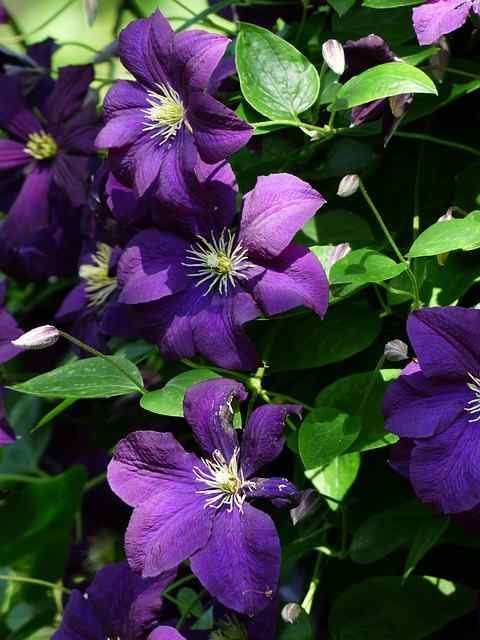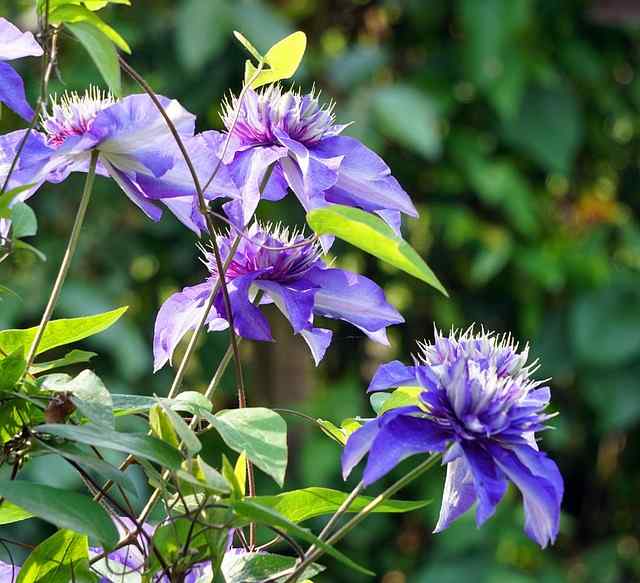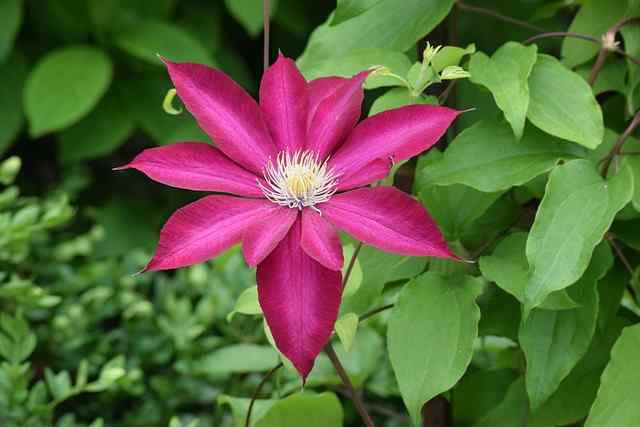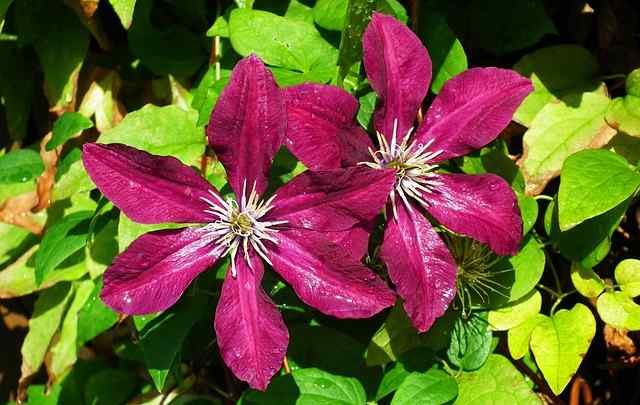In this guide, we will explore the various aspects of clematis leaves—design, color, texture, and their role in the overall health of the plant. By the end, you’ll not only understand what clematis leaves look like but also appreciate their beauty and function in the garden.
Understanding Clematis Varieties

Before diving into the specific characteristics of clematis leaves, it’s essential to grasp that clematis comprises over 300 species and a plethora of hybrids. This broad range leads to a diversity of leaf appearances. Factors such as the species, growing conditions, and even the time of year can influence how clematis leaves look.
For instance, Clematis viticella, known for its ease of growth, showcases deeply lobed leaves, while Clematis montana features more rounded foliage. This variability makes it all the more fascinating to observe how different clematis leaves can either complement or contrast the vibrant blooms they support.
Types of Clematis Leaves

Simple Leaves
Among the most common types, simple clematis leaves are undivided and generally oval or heart-shaped. ‘Nelly Moser’ is a popular variety featuring simple leaves that provide a lush backdrop for its stunning pink and purple flowers. The rich green of the foliage pairs beautifully with the floral display, adding depth and greenery to gardens.
Compound Leaves
Compound leaves feature multiple leaflets that emerge from a single stem. This could typically encompass three to five leaflets, and the layout can be quite intricate. For example, the Clematis terniflora has trifoliate leaves—three leaflets per stem—that project a delicate appearance. These compound leaves create more texture and complexity in the overall look of the plant.
Lobed Leaves
Another captivating type is lobed leaves, which can range from lightly to deeply segmented. This leaf type is characteristic of Clematis ‘Jackmanii’, showcasing five to seven distinct lobes per leaf. This structure not only enhances the plant’s aesthetic appeal but also increases its ability to capture sunlight, aiding photosynthesis.
Needle-like Leaves
Some clematis varieties, such as Clematis integrifolia, possess needle-like leaves that add a unique flair. These slender leaves embody a more elegant and refined look, making them suitable for more formal gardens or as unique visual accents.
Color Variations of Clematis Leaves

While the predominant color of clematis leaves is typically a rich, vibrant green, subtle variations do exist based on the variety and surrounding environment. Some interesting aspects include:
Seasonal Changes
As seasons transition, clematis leaves can showcase a variety of hues. In early spring, the leaves may emerge with a bright yellow-green tint before maturing to darker shades. In the fall, many varieties exhibit a stunning transformation, with colors ranging from deep burgundy to golden-yellow. This seasonal change provides not only beauty but also an opportunity for gardeners to appreciate the clematis throughout the year.
Variegation
Certain varieties, like Clematis ‘Gold Star’, feature beautiful variegated leaves with splashes of cream or yellow interspersed with green. This characteristic not only enhances visual interest but distinguishes these clematis types from others. Variegated leaves often look striking against the dark stems and the lushness of surrounding foliage.
Leaf Shape and Texture

Leaf Shape
Clematis leaves exhibit a range of shapes that further contribute to their uniqueness. Some leaves are oval or lance-shaped, while others might be heart-shaped or even star-shaped. The shape often tells you a lot about the plant, including its growth habit and flower pairing.
Leaf Texture
The texture of clematis leaves can be smooth, glossy, or slightly serrated, contributing to the plant’s overall tactile experience. For instance, the glossy leaves of Clematis ‘Etoile Violette’ showcase a sheen that captures sunlight beautifully, elevating the garden aesthetic. Meanwhile, slightly serrated edges on other varieties can impart a more rugged appearance.
Functionality of Clematis Leaves
While they might be beautiful, clematis leaves serve essential functions for the plant’s health.
Photosynthesis
The primary role of any leaf in a plant is to aid in photosynthesis—the process by which sunlight is converted into energy. Clemetis leaves are specifically designed to maximize this process, capturing ample sunlight with their broad surface area. This ensures that the plant receives the nourishment it needs, especially crucial for flowering.
Water and Nutrient Absorption
The leaves also play a vital role in water regulation and nutrient absorption. The materials they are composed of, including cuticles and stomata, are adept at balancing moisture levels, making them essential for plant health in varying weather conditions.
Natural Identification
Observing clematis leaves can also help botanical enthusiasts identify specific varieties. For example, the distinguishing characteristics of leaf shape and lobe count are used in horticultural practices to classify and differentiate between species or cultivars.
The Importance of Leaf Care
Taking care of clematis leaves not only preserves their beauty but is essential for the health of the plant.
Regular Inspection
Regularly inspecting the leaves for signs of pests or diseases is crucial. Common adversaries include aphids, spider mites, and powdery mildew. Healthy leaves can be the first indicator that your clematis is thriving, while any signs of distress may lead to deeper issues.
Pruning
Pruning is another necessary aspect of maintaining healthy leaves. Clematis can benefit from a proper pruning schedule, allowing for better air circulation and sunlight penetration. Well-pruned clematis will boast lusher leaves, ultimately resulting in stronger blooms.
Clematis Leaves in the Landscape
Textural Contrast
Integrating clematis within your garden scheme can create beautiful textural contrasts. The unique leaf shapes and sizes make them ideal for breaking the monotony of other, more conventional foliage. Pairing plants with various leaves alongside clematis can enhance your garden’s allure.
Climbing and Covering
Clematis leaves provide attractive green cover and charm to garden structures. When allowed to climb on trellises, fences, or arbors, the lush foliage can soften hard boundaries while creating serene garden pathways.
Frames for Flowers
Clematis leaves also act as a framework for their dazzling flowers. As the blooms develop, the rich green leaves serve to highlight the colors above them, intensifying the beauty of the flowers. Strategically placing clematis with other blooming plants can create a dynamic visual experience, leading to seasonal displays that delight viewers at every glance.
Conclusion
Understanding what clematis leaves look like propels both novice and experienced gardeners into a deeper appreciation of these remarkable plants. From their various shapes, textures, and colors, to their vital roles in photosynthesis and overall plant health, clematis leaves are far more than mere supports for the stunning blossoms they help uplift.





